Last year, I joined the Complex Weavers study group on tied weaves. This study group marks my introduction into the world of tied weaves and I have had fun exploring Summer & Winter as a tied weave structure. In this blog post, I explain my approach to making a colorful Summer & Winter draft, with pictures of my woven samples sprinkled throughout.
An introduction to tied weaves
By definition, a tied weave has two sets of warp ends (pattern ends and tie-down ends) and two sets of weft ends (pattern ends and ground ends). Warp pattern ends and tie-down ends are threaded in a specific ratio, and the same holds for the treadling of weft pattern ends and ground ends. The structural soundness of the fabric is ensured by a ground cloth that consists of the interlacement of the full warp (both pattern and tie-down ends) with the ground weft ends. This means that both sets of warp ends are essential to the structure of the fabric, as is the ground weft. The pattern wefts are supplementary, i.e. not essential. Yet, they definitely are essential to the design of the woven piece. The pattern weft ends are tied to the cloth by the tie down warp ends, while the pattern warp ends determine on which side of the cloth floats occur.
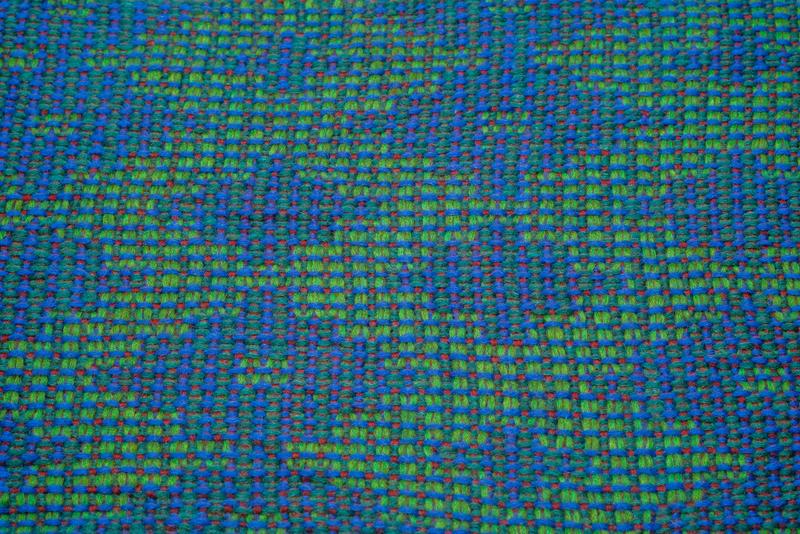
Summer & Winter as a tied weave
For my first experience with tied weaves, I have dived into the Summer & Winter structure. This is a 1:1 tied weave, indicating that pattern and tie-down ends alternate 1-1 in the warp, and pattern ends are treadled against ground ends in the same alternating order. Summer & Winter requires two shafts for the tie-down ends, and the tie-down ends are threaded alternatively on these shafts. Considered as a unit weave, Summer & Winter is a 2-tie unit weave. This means that every unit contains 2 tie-down ends: one on tie-down shaft 1 and one on tie-down shaft 2. The unit is completed by 2 pattern warp ends on a single pattern shaft; hence a Summer & Winter unit has four warp ends. The ground cloth is plain weave, and this plain weave cloth can be obtained by alternatively weaving pattern ends against tie-down ends.
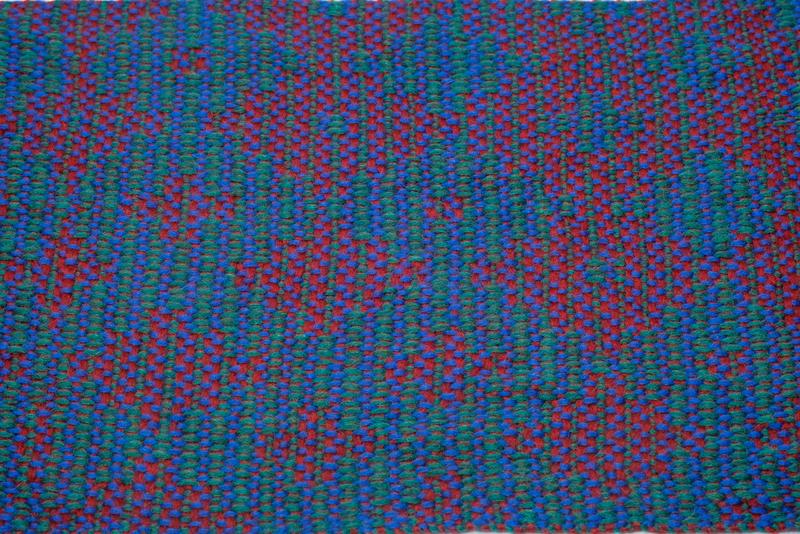
Exploring Summer & Winter
Though my literature study of this structure, I found that a traditional Summer & Winter weave uses a thin yarn for the full warp and the ground weft, combined with a thicker yarn for the pattern weft. This gives a cloth in which the pattern weft takes center stage in creating the overall pattern. In my explorations of the technique, I decided to deviate from this concept a little by using a single yarn weight for the full design. With this idea in mind, I turned to Fiberworks to create some Summer & Winter designs suitable for my 8-shaft floor loom.
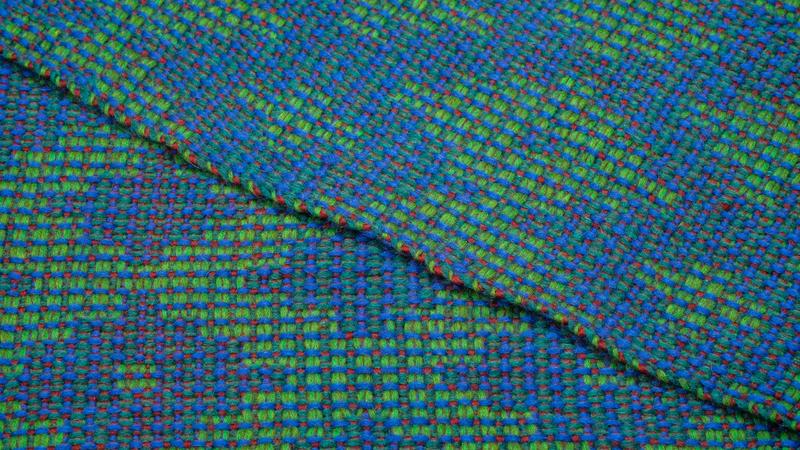
I explain my approach to designing a Summer & Winter motif on 8 shafts with a single yarn weight using a simple design line as an example. The process starts by making a design line on 6 shafts using a 3/3 diagonal tie-up and weaving as drawn in. Once I am happy with the design line, I double each end in the design line (i.e., interleaving the design line with itself) on both warp and weft.

The intermediate result now consists of only pattern warp ends and pattern weft ends, so I still need to add tie-down ends and ground ends.
- Adding the tie-down ends is a matter of adding two tie-down shafts and interleaving the pattern warp ends in a 1:1 ratio with tie-down ends that are alternatively placed on these two shafts.
- Similarly, I add two extra treadles for the ground weft ends and interleave the pattern weft ends in a 1:1 ratio with alternating ground weft ends on these two treadles.
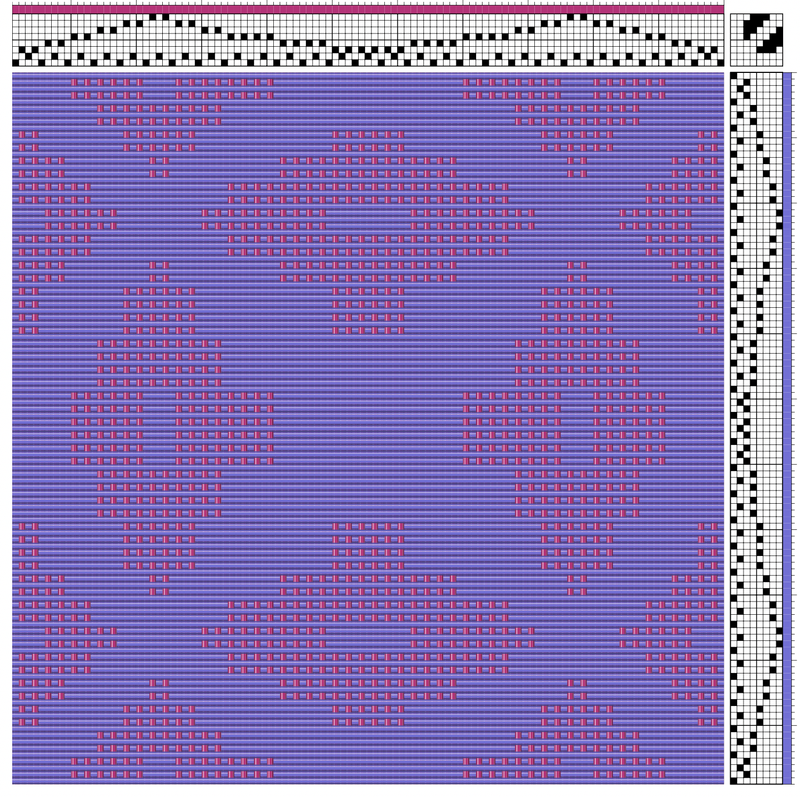
At this stage, all that is left is completing the tie-up. The interleaving of warp ends with weft ground ends is easy: just let the two added treadles raise pattern warp ends against tie-down ends. The interleaving of warp tie-down ends with weft pattern ends can be done in various ways. The simplest way is to tie the tie-down shafts alternatively to the six pattern treadles. Another option is to add two extra treadles and use a skeleton tie-up. In this way, it is possible to use the pattern treadles with either of the tie-down shafts. Allow multi-pedal action (in the Treadling menu) and add a tie-down shaft to each of the pattern treadles as you please.
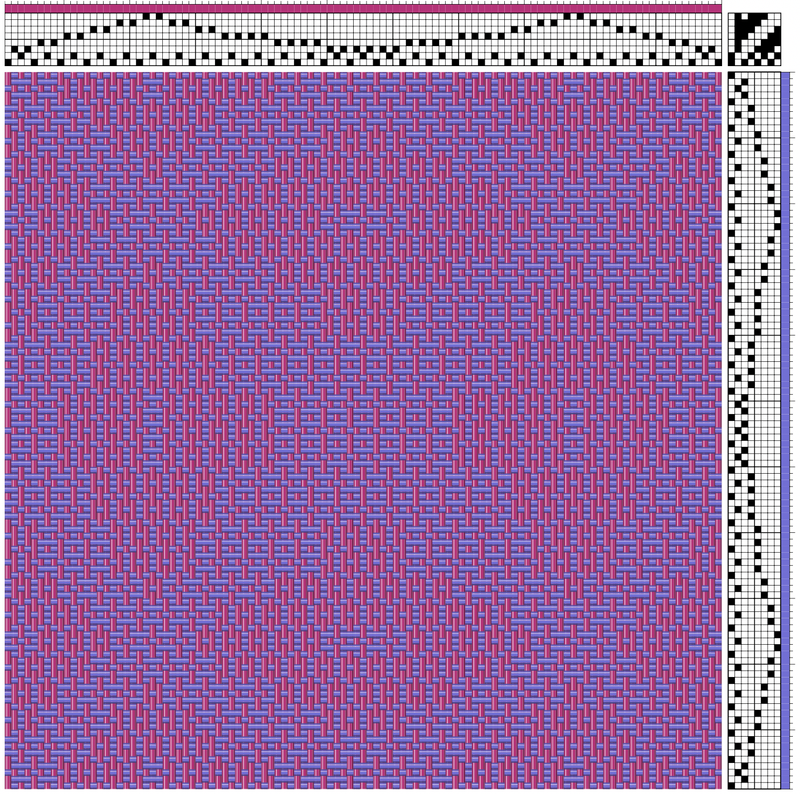
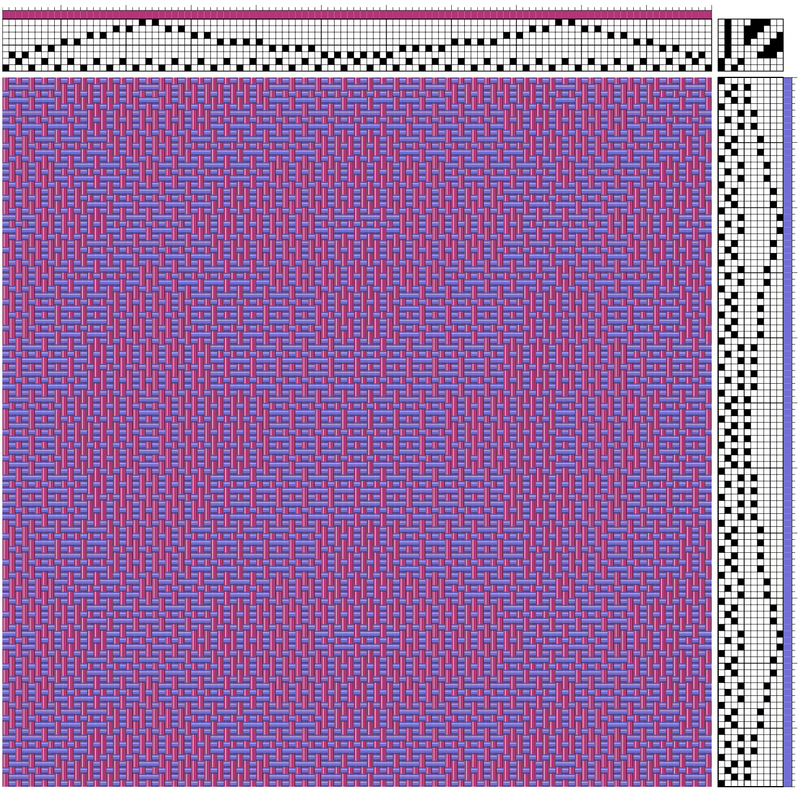
The design line in this example is quite simple, but this design approach can also be used to obtain more intricate motifs. When designing, it is important to keep in mind that compared to the initial design line, the actual weaving draft is expanded by a factor of four. For example, I started with a design line of 27 ends and ended up with a draft of 4×27+1=109 ends – one last end is added to balance-out the design.
Adding some color to Summer & Winter
I wanted to play around with colors, and Fiberworks is the perfect tool to try out lots of color combinations. I really like the color effects that emerge when combining four colors: one each for the pattern warp ends, tie-down ends, pattern weft ends, and ground ends. Due to the 1:1 ratio of the Summer & Winter structure, this means that the two warp colors alternate in the warp, and the weft also consists of two alternating colors.
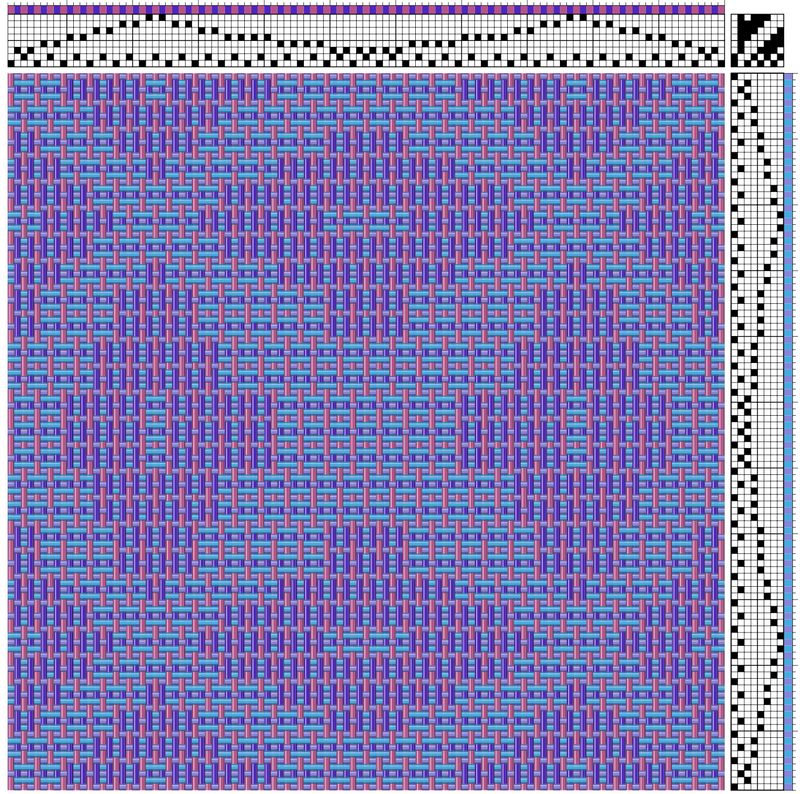

The two colors of the pattern warp and weft ends are on the foreground, while the other two colors add a more subtle effect. Different combinations of colors can make the motif more subdued or very bold. I find that not all combinations work well together, so it is a matter of trial-and-error. Sometimes, simply switching around the two weft color can make a huge difference.
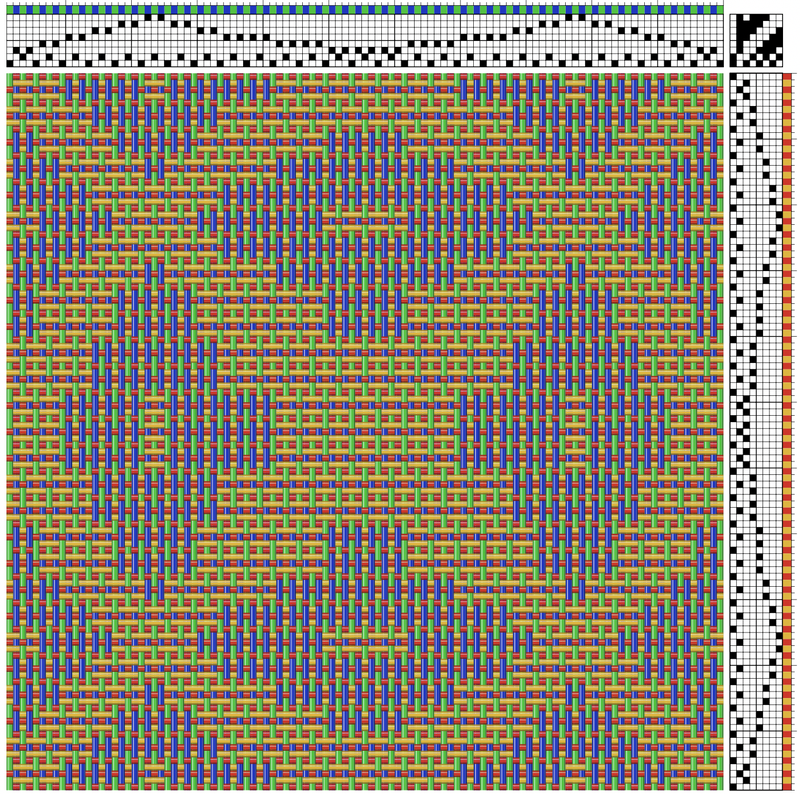
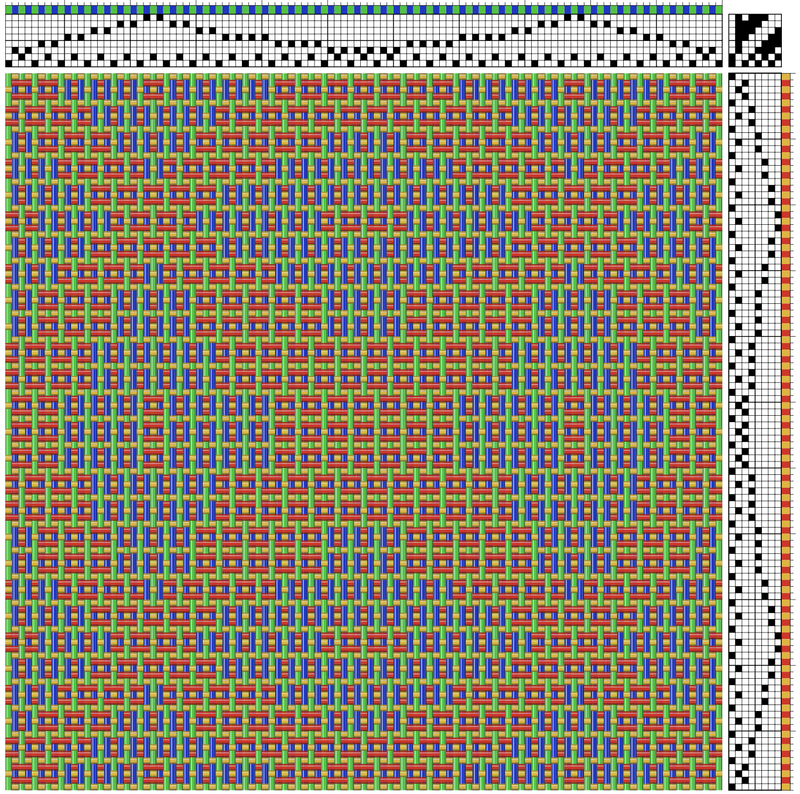
It is also fun to vary the colors of the weft during the weaving. For example, using only one weft color can yield very beautiful interactions with the two colors of the warp.
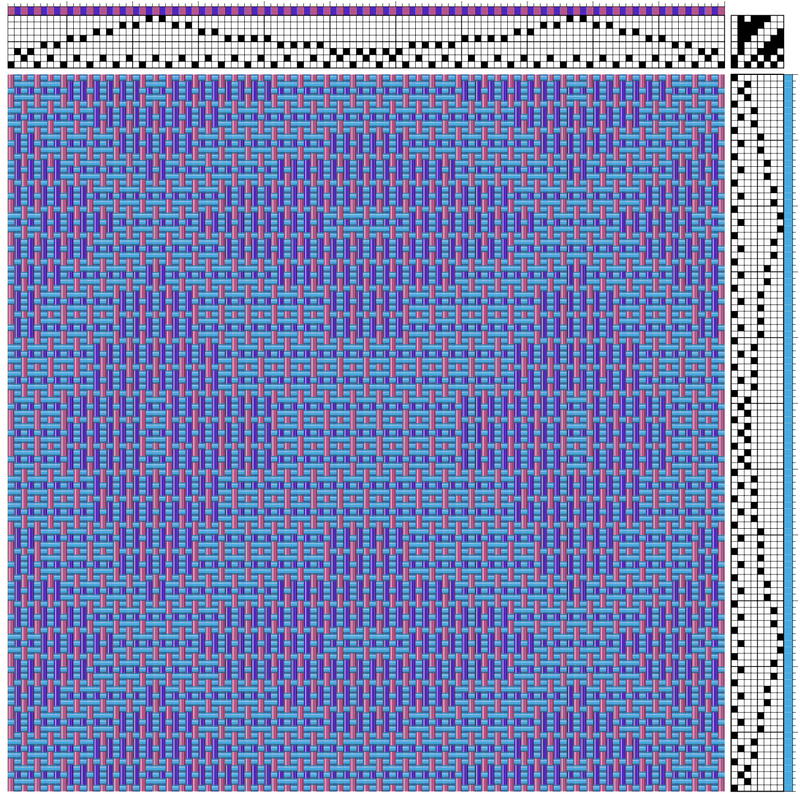
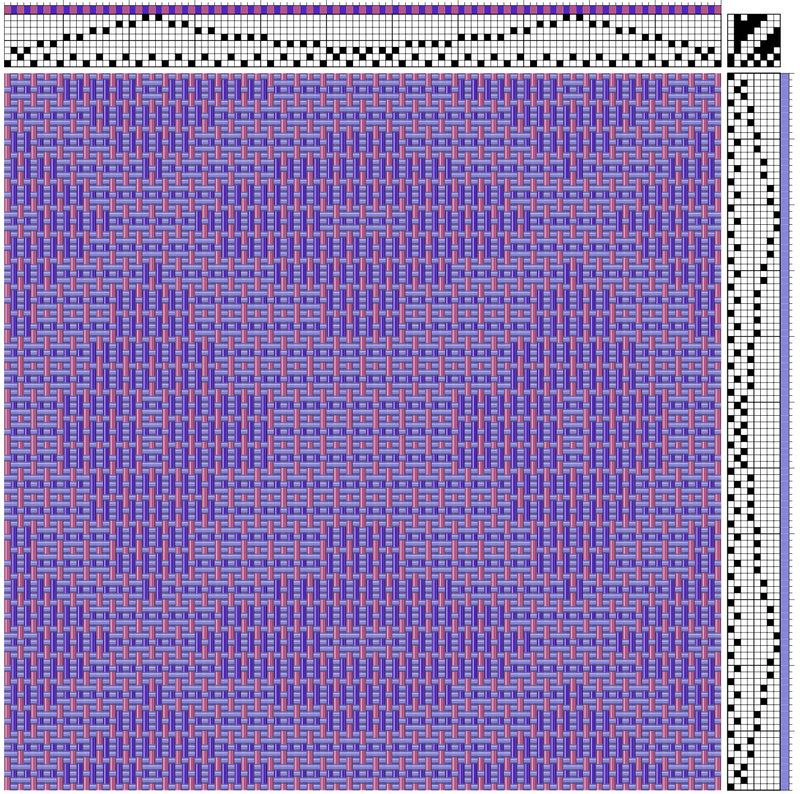
As for the actual woven samples, these are all woven on the same blue and green warp. For one set of samples, I used a red weft only. For the second set, I used chartreuse for the pattern weft ends and red for the ground weft ends. This gives two completely different looks. I had fun designing and weaving these samples and expect to dive deeper into the wonderful world of tied weaves in the future.


